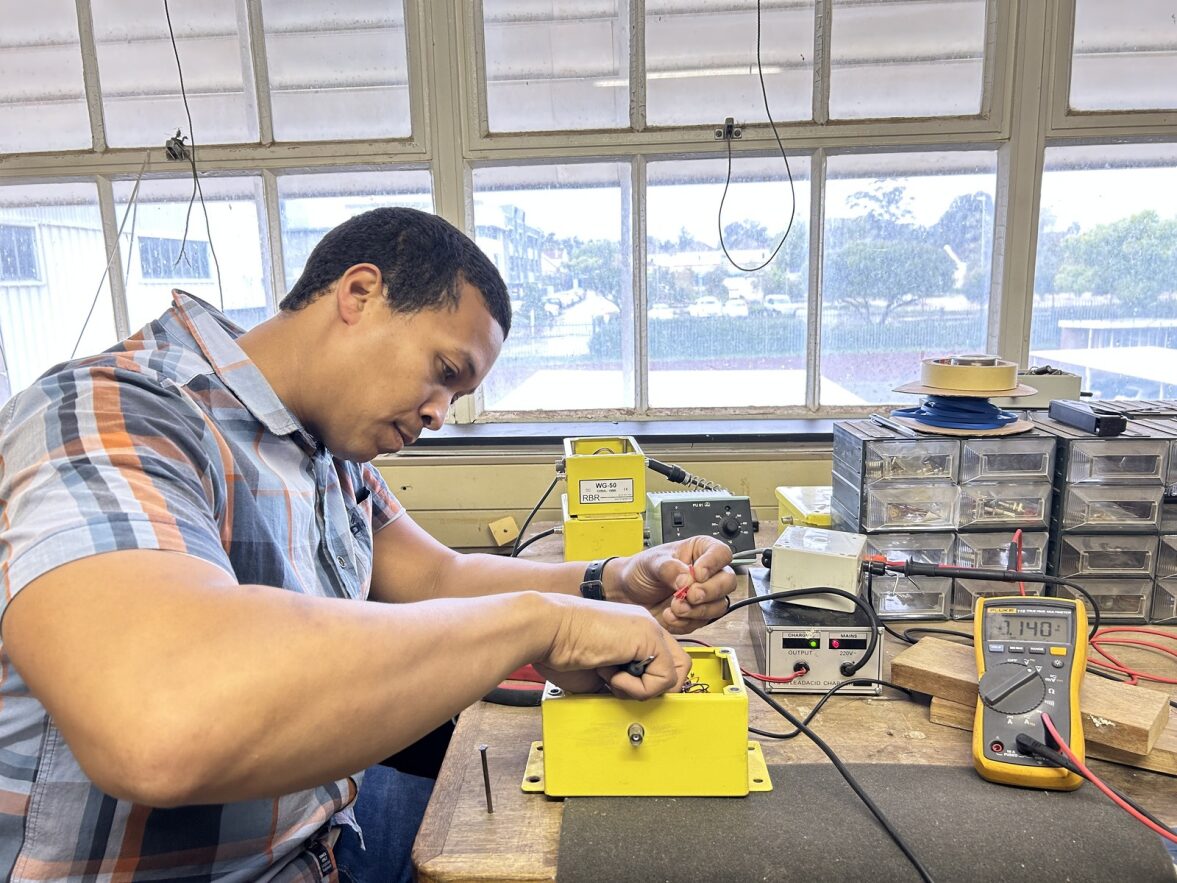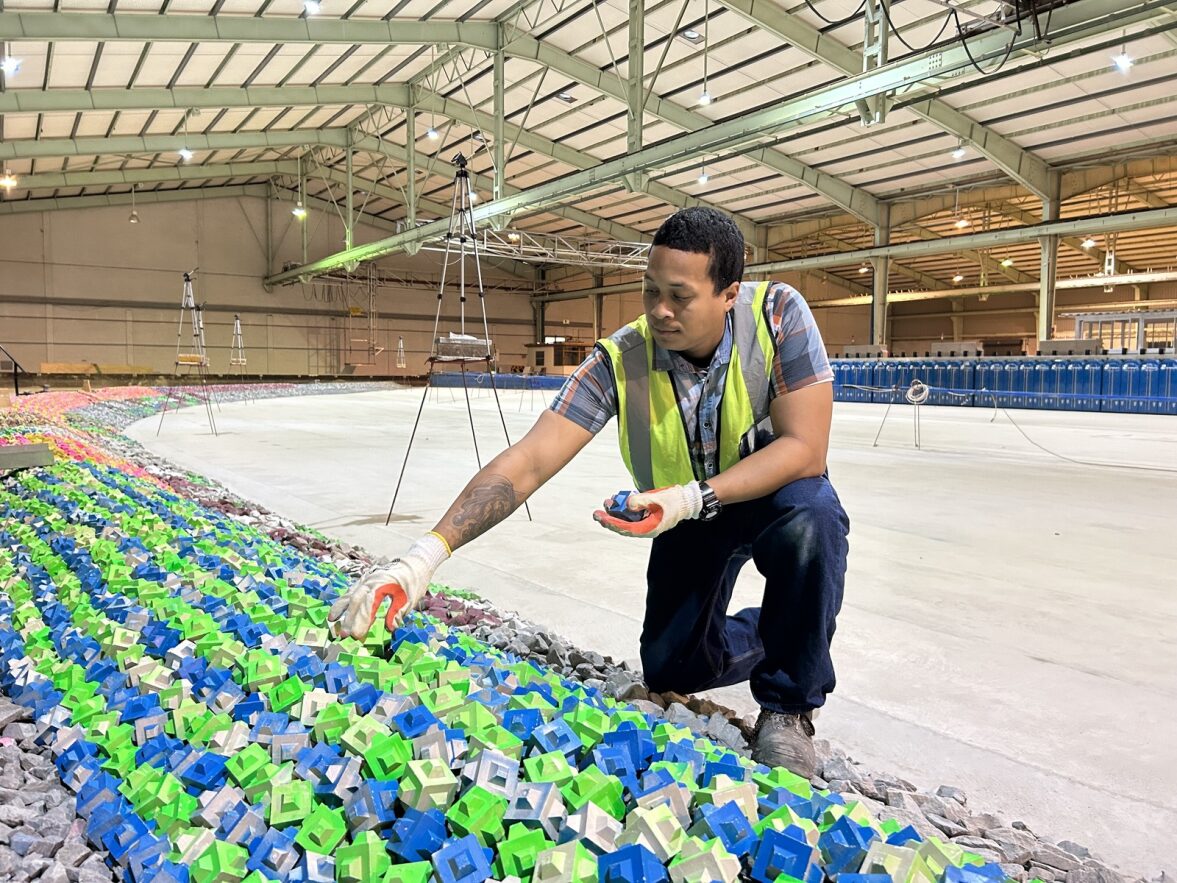Constructing physical models for port studies
Exciting projects are always in the pipeline at the CSIR’s Coastal Engineering and Port Infrastructure Model Hall in Stellenbosch. The facility, which boasts the title of being the largest physical hydraulic modelling facility in the southern hemisphere, is home to Rosco Platen and his colleagues. Their primary task is to construct two and three-dimensional physical scale models on behalf of clients, enabling a comprehensive understanding of how dynamic ocean waves impact critical infrastructure.
Meet Rosco Platen
Exciting projects are always in the pipeline at the CSIR’s Coastal Engineering and Port Infrastructure Model Hall in Stellenbosch. The facility, which boasts the title of being the largest physical hydraulic modelling facility in the southern hemisphere, is home to Rosco Platen and his colleagues. Their primary task is to construct two and three-dimensional physical scale models on behalf of clients, enabling a comprehensive understanding of how dynamic ocean waves impact critical infrastructure.
“We have recently completed a project focused on breakwater rehabilitation. Our work involved testing concrete armour units designed to dissipates waves, effectively reducing the energy of waves entering ports or harbours. We also simulated heavy storms and tracked the movement of these concrete armour units post-testing to assess potential damage,” Platen says.
Platen studied building and civil engineering at a technical vocational education and training college where mathematics and physics were part of the curriculum. When it comes to future career goals, Platen is committed to furthering his qualifications, “I plan to complete my National Diploma in building and civil studies and thereafter, I aspire to pursue a degree in civil engineering.”

with wave probe and control box calibration.
In Platen’s view, the work at the CSIR’s Coastal Engineering and Port Infrastructure Model Hall is as unpredictable as the weather in Cape Town. However, as a result, he finds himself learning something new every day. “Every project is unique, and while this presents its own challenges, it also means that one constantly learns to adapt,” he says.
Platen enjoys working in a field that makes a real-world impact. “Ports play a crucial role in national and international trade by sea, serving as vital hub for goods loading and unloading,” he emphasises. “Yet, they are also vulnerable to natural disasters. Any damage or operational disruption at a port can have a significant economic impact. While air cargo transportation is faster and more consistent, it comes with added expenses. Sea cargo, on the other hand, offers cost-effective transportation for larger loads. Therefore, when ports experience problems and or operational hindrances, repair and operational costs increase, and the economy is compromised.”
Platen thoroughly enjoys fieldwork. “I have done site work in my previous jobs, but this type of fieldwork is more exciting! There are opportunities for travelling and to gain professional field experience,” he says. To ensure a successful career in coastal engineering and port infrastructure, he is continually honing his skills and knowledge a the CSIR. He is actively engaged in learning various systems and processes, including operating the hardware and software used for tests and construction. Moreover, he benefits from the wisdom and guidance of experienced seniors in the field.

Model Hall in Stellenbosch is Rosco Platen.


